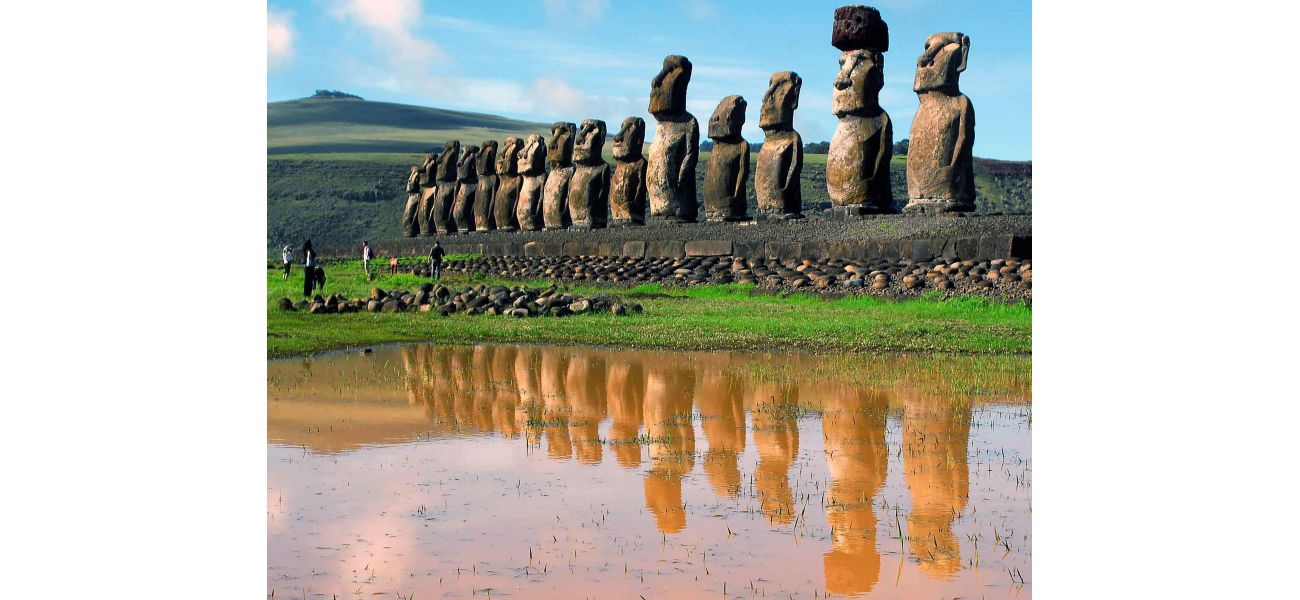New DNA evidence disproves the theory of a major collapse on Easter Island.
The disputed idea was believed to demonstrate the impacts of human interference with nature.
September 16th 2024.

The island of Rapa Nui, more commonly known as Easter Island, has long been a source of fascination and mystery. Located in the Pacific Ocean, about 3700km from the South American mainland, it is home to hundreds of monumental stone heads that have baffled experts for centuries. However, a recent analysis of ancient DNA from 15 former inhabitants has shed some light on the island's past and debunked a popular theory about its history.
According to the study published in the scientific journal Nature, the analysis showed no evidence of a ruinous population collapse on Rapa Nui. This goes against the popular belief, as described in Jared Diamond's book "Collapse," that the island's limited resources led to a catastrophic decline in population and the destruction of society through infighting. However, the new study suggests that the island was actually home to a small but sustainable society.
The research team sequenced the genomes of 15 individuals who lived on the island in the past 400 years, which is the first time ancient DNA has been used to study Rapa Nui's history. The results showed that the population steadily increased until the 1860s when slave raiders from Peru forcibly removed one-third of the island's inhabitants. This event was a significant blow to the island's population, but it was not the cause of a collapse as previously thought.
The DNA analysis also revealed that the inhabitants of Rapa Nui had genetic ties to a Native American population, indicating that they had reached the Americas sometime between 1250 and 1430. This was well before Christopher Columbus' arrival in the New World in 1492 and even before Europeans reached Rapa Nui in 1722. The study estimated that the interbreeding between the two populations took place 15 to 17 generations before the individuals studied.
These findings are not entirely surprising, as oral histories and present-day islanders' DNA have hinted at this ancestry. The study's lead author, J Víctor Moreno-Mayar, noted that remains of sweet potatoes, an import from South America, have been found on the island even before European contact. This suggests that Rapa Nui's ancient seafarers were skilled navigators who had been living in an Oceanic environment for thousands of years.
The study's results have received support from experts who have questioned the narrative of ecocide and societal collapse on Easter Island. Lisa Matisoo-Smith, a professor of biological anthropology at New Zealand's University of Otago, stated that the ancient DNA evidence adds to a growing body of evidence against this theory. She also noted that the original Polynesian voyagers who discovered and settled on Rapa Nui were among the greatest navigators and voyagers in the world.
The human remains used in the DNA analysis were collected in the late 19th and early 20th centuries by French and Swiss scholars. The research team worked closely with Rapa Nui communities and government institutions to obtain consent for the study. They hope that the results will help facilitate the repatriation of the remains so that the individuals can be laid to rest on the island.
In conclusion, the new study has provided valuable insights into Rapa Nui's mysterious past and challenged long-held beliefs about the island's history. It also serves as a reminder of the importance of working with local communities and respecting their wishes when conducting research on their ancestral lands.
According to the study published in the scientific journal Nature, the analysis showed no evidence of a ruinous population collapse on Rapa Nui. This goes against the popular belief, as described in Jared Diamond's book "Collapse," that the island's limited resources led to a catastrophic decline in population and the destruction of society through infighting. However, the new study suggests that the island was actually home to a small but sustainable society.
The research team sequenced the genomes of 15 individuals who lived on the island in the past 400 years, which is the first time ancient DNA has been used to study Rapa Nui's history. The results showed that the population steadily increased until the 1860s when slave raiders from Peru forcibly removed one-third of the island's inhabitants. This event was a significant blow to the island's population, but it was not the cause of a collapse as previously thought.
The DNA analysis also revealed that the inhabitants of Rapa Nui had genetic ties to a Native American population, indicating that they had reached the Americas sometime between 1250 and 1430. This was well before Christopher Columbus' arrival in the New World in 1492 and even before Europeans reached Rapa Nui in 1722. The study estimated that the interbreeding between the two populations took place 15 to 17 generations before the individuals studied.
These findings are not entirely surprising, as oral histories and present-day islanders' DNA have hinted at this ancestry. The study's lead author, J Víctor Moreno-Mayar, noted that remains of sweet potatoes, an import from South America, have been found on the island even before European contact. This suggests that Rapa Nui's ancient seafarers were skilled navigators who had been living in an Oceanic environment for thousands of years.
The study's results have received support from experts who have questioned the narrative of ecocide and societal collapse on Easter Island. Lisa Matisoo-Smith, a professor of biological anthropology at New Zealand's University of Otago, stated that the ancient DNA evidence adds to a growing body of evidence against this theory. She also noted that the original Polynesian voyagers who discovered and settled on Rapa Nui were among the greatest navigators and voyagers in the world.
The human remains used in the DNA analysis were collected in the late 19th and early 20th centuries by French and Swiss scholars. The research team worked closely with Rapa Nui communities and government institutions to obtain consent for the study. They hope that the results will help facilitate the repatriation of the remains so that the individuals can be laid to rest on the island.
In conclusion, the new study has provided valuable insights into Rapa Nui's mysterious past and challenged long-held beliefs about the island's history. It also serves as a reminder of the importance of working with local communities and respecting their wishes when conducting research on their ancestral lands.
[This article has been trending online recently and has been generated with AI. Your feed is customized.]
[Generative AI is experimental.]
0
0
Submit Comment





